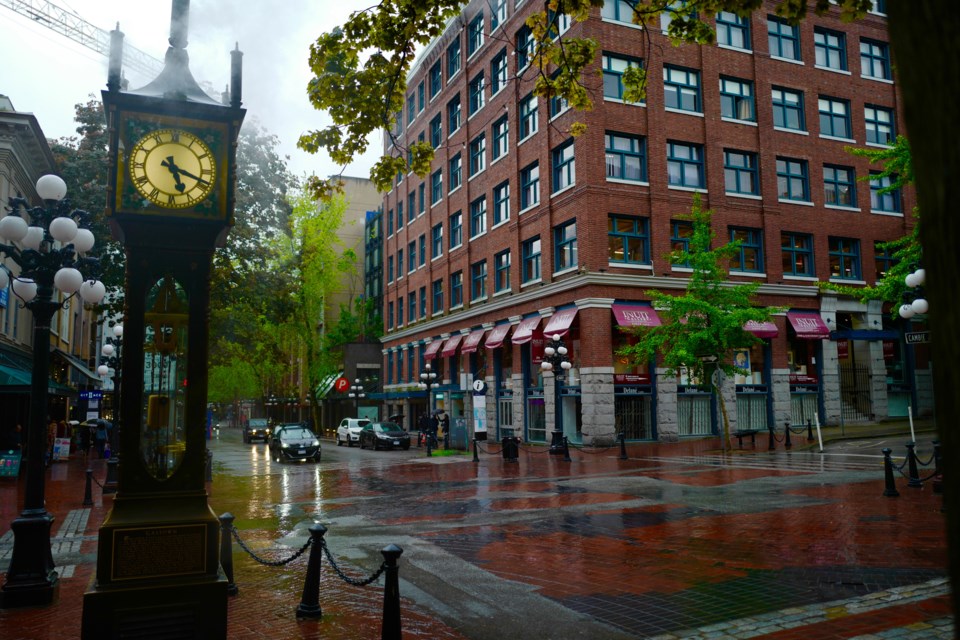As Vancouver enters an uncertain summer, what better time to talk about every Vancouverites’ favourite subject. No, not The English Bay barge, the rain.
Some climate predictions have the annual rainfall in British Columbia rising by 6 per cent over the next twenty-eight years. The implications are stark: flooding, sewer overflow, and increased water pollution. The IPCC Sixth assessment says an increase in extreme precipitation for our region is “very likely.” Good thing then that the City of Vancouver has embraced Green Rainwater Infrastructure (GRI).
Think of GRI as a means of incorporating nature to solve water-related problems caused by rain. Moreover, GRI improves water quality, enhances biodiversity, and creates ecological habitats. GRI should not be confused with grey infrastructure, the antiquated system of pipes, treatment plants, and reservoirs that has long been the method of managing water resources. Rainwater management requires a holistic approach involving GRI, land use and, yes, those old pipes.
GRI is central to the COV’s Rain City strategy, a long-term plan to turn Vancouver into a “water sensitive” city. The strategy shows a vision for a future where the city has been “reimagined” in its design to “embrace rainwater as a valued resource [for] communities and natural ecosystems.” To do this, the strategy aims to remove pollutants from captured rainwater, increase porous land, limit the volume of rainwater getting into the pipe system, “harvest” rainwater, and increase green spaces. The end goal: Capture and clean 90 per cent of our average rainfall, and manage 40 per cent of runoff from impervious areas by 2050.
So what does GRI look like? Here’s a primer on some GRI options that can mitigate rainfall.
- Bioswale: open spaces designed to attenuate and treat stormwater runoff. They act as a sort of eco-gutter whereby the soil and vegetation slow rainwater down, allowing the water to sieve through the soil, which then removes any particulate pollutants such as dust and smoke.
- Rain garden: landscape features that treat water runoff from a hard surface, like a roof, patio, or parking lot. There are several pros to rain gardens, but to cite just one here: they can be designed to temporarily house small or medium amounts of stormwater.
- Permeable (porous) paving: hard surface that allows rainfall to seep into an underlying reservoir where rain can be filtered by the soil or drained away. The flaw in concrete and asphalt is that due to their impermeable nature, rain has nowhere to drain so it pools on the surface or flows down toward its lowest point. Porous paving allows rainfall to enter the sub-soil leading to groundwater recharge. Great news for aquifers!
- Green roofs: roofs that have a waterproof membrane, some growing medium, and soil that supports living plants. In other words, a “living roof.” Studies show that these living roofs return moisture back into the atmosphere through evapotranspiration, or the net result of evaporation from the surface and transpiration from plants.
- Rainwater harvesting: collecting rainwater and storing it for later use. This practice can supplement municipal water needs, protect watersheds, and be used for irrigation.
See? GRI isn’t as fanciful or strange as you might expect. You may have already seen examples of it in action around the city. Like the bioswale at Yukon and 63rd, for example. Rain does define, and in the future, will continue to shape our city.






